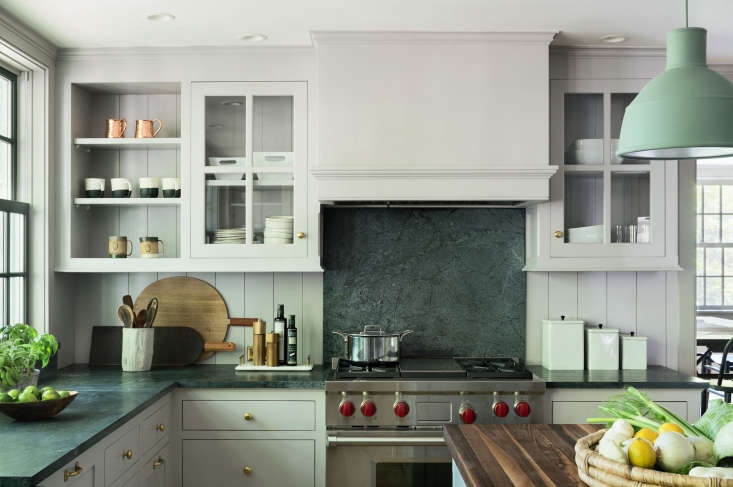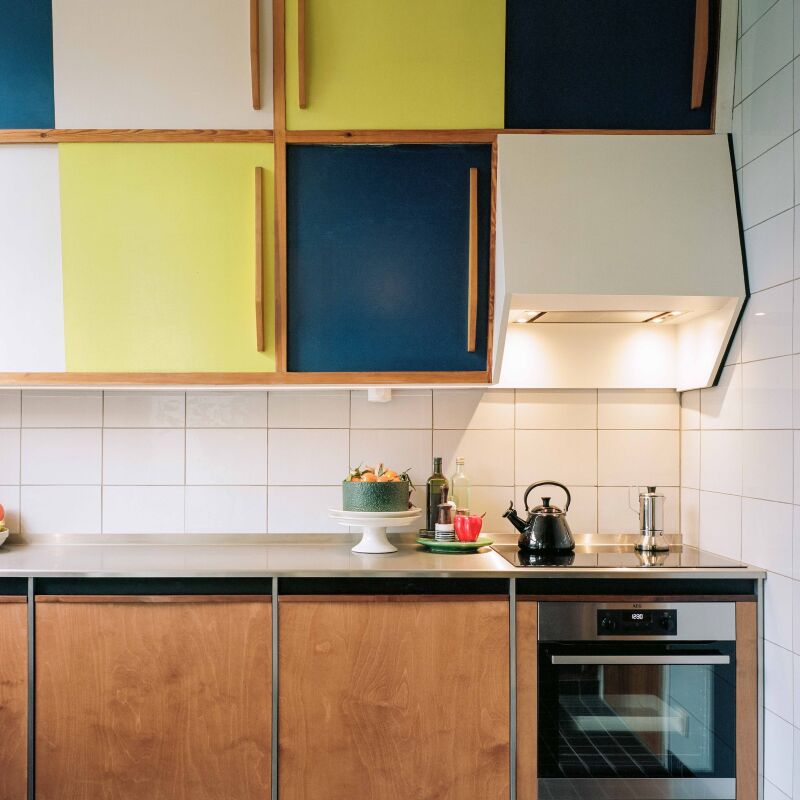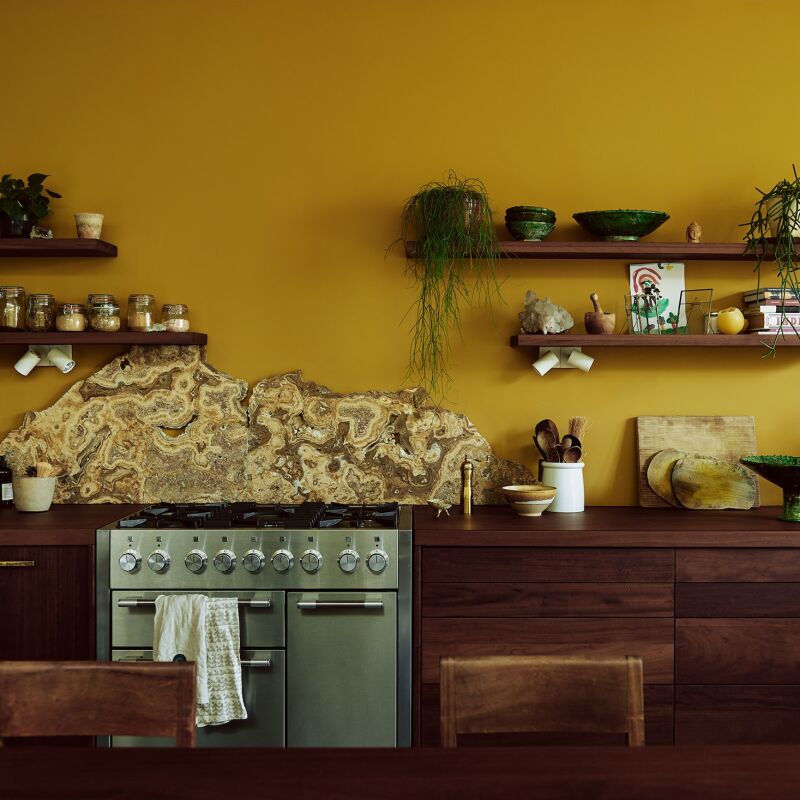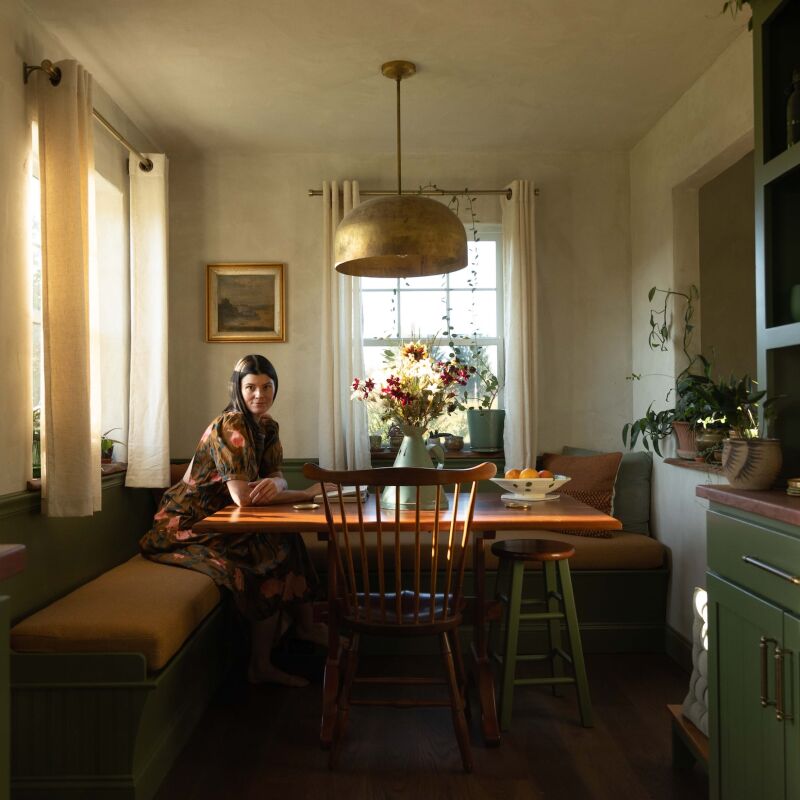I spent a total of nearly five years as an editor at Martha Stewart magazines—Weddings and, later, Living—and what I remember most about my time there were my colleagues’ copious creative talents and near-religious commitment to good taste and design. The team of designers, stylists, crafters, food editors, and other creatives I worked alongside believed in the DIY spirit, in the transformative potential of small details, in the worthwhile pursuit of domestic perfection—and, above all, it seemed to me, in soapstone.
Soapstone was endlessly featured in the magazines I worked on and advocated by Martha herself. (You can watch her wax poetic about the stone here. And here and here.) By the time I left the company, I was a convert and even had soapstone counters installed in my new kitchen. I chose a dark gray slab with beautiful veining and readied myself for a lifetime of picture-perfect kitchen scenes.
Four years in—heresy!—I have regrets. Soapstone’s famed patina? Turns out I’m not so keen on it. Here are the pros and cons of soapstone countertops.
Pros

It’s natural. While I get the no-fuss appeal of Caesarstone and other engineered materials, I far prefer the look of natural quarried stone. I like knowing that no two slabs are alike. And I love that I was able to choose a piece with particularly dramatic veining for my island. Plus, there’s character and warmth to natural stones that I don’t think you can get from engineered stones.
It comes in different shades. I picked a dark gray, almost black, soapstone, but the stone comes in lighter grays as well. And some have a blue or green undertone.

It’s heat-resistant. This may not seem like a big deal, but it’s pretty darn great in my book. I don’t think twice about placing a hot-off-the-stove pot directly onto my soapstone countertop.
It doesn’t react to acid. Which is why it’s often used in science labs. Unlike marble, another natural stone with a fervent following, soapstone doesn’t mind the acid from vinegar, citrus, wine, and tomatoes.
It doesn’t need to be sealed. Soapstone is nonporous (no staining!) and doesn’t need to be sealed—another way it differs from marble.
Cons

It’s soft. Soapstone’s softness is sometimes seen as a plus. Before renovating my kitchen, I remember reading on the interwebs that its softness means that a glass is less likely to break if dropped on a soapstone countertop. From my experience living with two careless kids, this is a questionable claim. Our soapstone counters are definitely hard enough to shatter drinking glasses (and I have a handful of broken Picardie ones to prove it).
That said, it is softer than any kitchen counter should be. A dropped can of beans will leave a nick. Same goes for a dropped dinner knife. And don’t even think about slicing an apple or sandwich on a soapstone counter.
I don’t know if it’s just our counters, but sometimes even sliding a glass or vase along the surface will result in scratches. The fix is simple—you can simply sand away nicks and scratches—but it’s aggravating to have to treat your kitchen counters so gingerly.
It wears unevenly. If you want a dark look for your soapstone, you have to oil it every few months. Problem is, the parts that get used the most (for me, that’s the area around the sink and the perimeter of the island where people eat) fade faster, resulting in some areas that are dark and sleek, and others that are lighter and more textured.

It requires seams. It’s difficult to find soapstone slabs in longer lengths, which means that most soapstone countertops will have a seam. We chose to put the seam right in the middle of the sink to minimize its size.
It’s expensive. It’s generally less pricey than marble but more than granite and engineered stones.
It needs to be maintained. If you prefer the dark soapstone look—like I do—you’ll need to apply mineral oil every so often. The task is more difficult than you think. I have to remove every single item from the countertop before I apply the oil. Then I have to wipe the oil off. Then let it soak in overnight before I can put everything back on the counters. It’s a time-consuming process—which is ultimately why I’ve skipped this step for the past couple years.
It has a funny feel. I’ve found that weeks after applying the mineral oil, I still felt an off-putting, slightly oily residue on my counters. Months later, that stickiness finally disappears, but it’s replaced by the stone’s natural leathery, soap-like feel (thus its name). Many soapstone fans prize this non-slick texture, but not me.
The Verdict
I’m not replacing my soapstone countertops anytime soon. I can’t seem to quit them; they were my first design love, after all. But I would caution anyone who’s considering soapstone to make sure they either like patina (like, honestly, sincerely, truly enjoy it) or won’t mind putting in the effort to maintain a dark, smooth look.
All these years later, I’m still learning to be at peace with the patina in my soapstone. I have faith that one day, I’ll finally be able to find the beauty in its nicks and scratches, in its uneven wear and tear. I just wish I had known that loving patina in someone else’s kitchen is far different from living with it in my own.
For similar content, see:
- Remodeling 101: A Low-Maintenance Guide to Maintaining Soapstone Countertops
- Remodeling 101: How to Care for Marble Countertops
- Is It Worth It: The Aarke Countertop Premium Carbonator from Sweden
Frequently asked questions
What are soapstone counters?
Soapstone counters are made from a natural stone that is quarried from the earth. It is a soft and dense stone that is known for its durability and heat resistance.
What are the pros of using soapstone counters?
Soapstone counters are naturally resistant to heat, stains, and bacteria. They are also very durable and require minimal maintenance.
What are the cons of using soapstone counters?
Soapstone counters can scratch easily, and they require routine oiling to maintain their appearance. They also come in limited color options and are more expensive than other countertop materials.
What are some common regrets when using soapstone counters?
Some common regrets when using soapstone counters include the appearance of scratches and the need for routine oiling. Some people also regret not choosing a countertop with more color options.
How can I care for my soapstone counters?
To care for your soapstone counters, you should routinely oil them to maintain their appearance. You should also avoid cutting directly on them and wiping up any spills immediately to avoid stains. Scratches can be easily sanded out with fine-grit sandpaper.






Have a Question or Comment About This Post?
Join the conversation